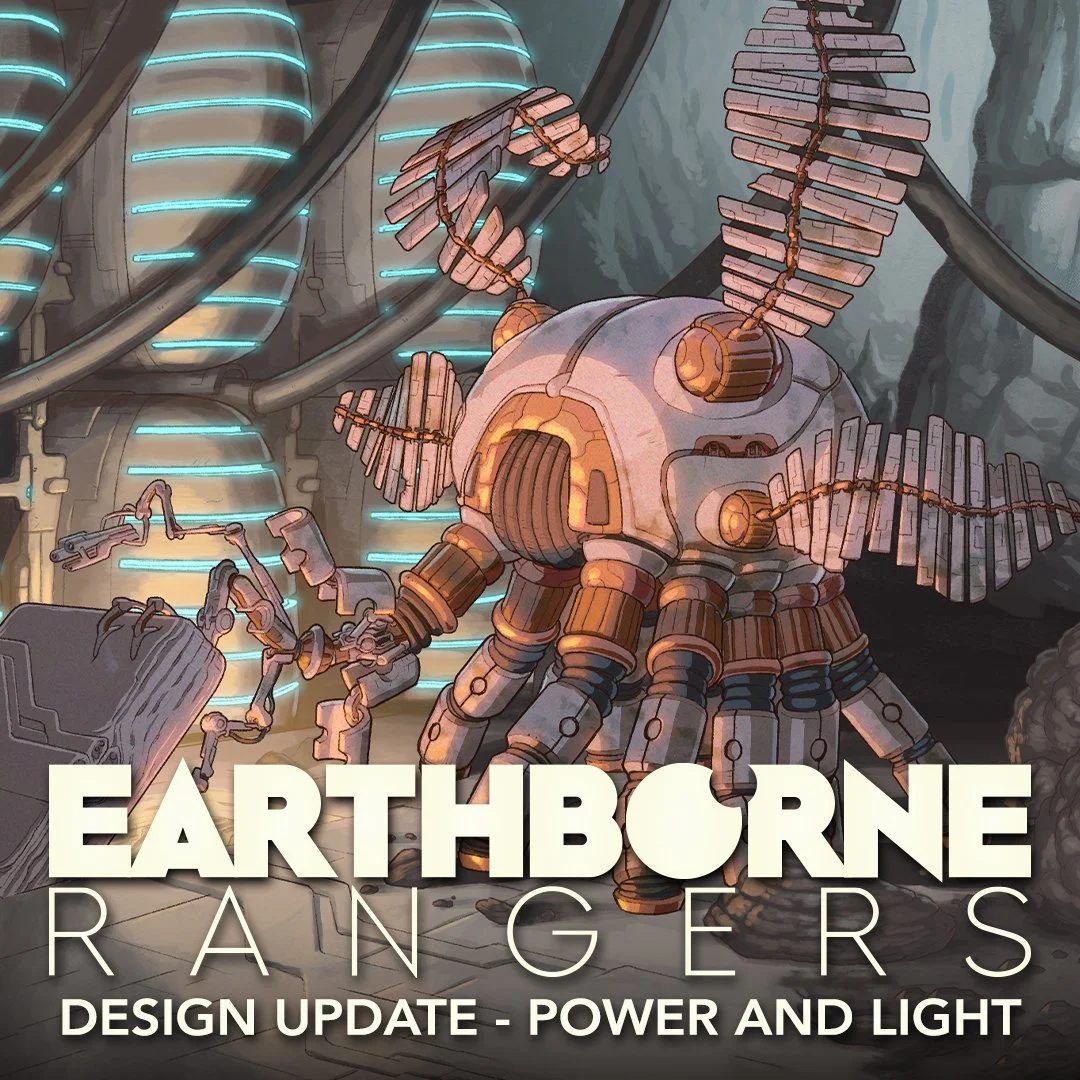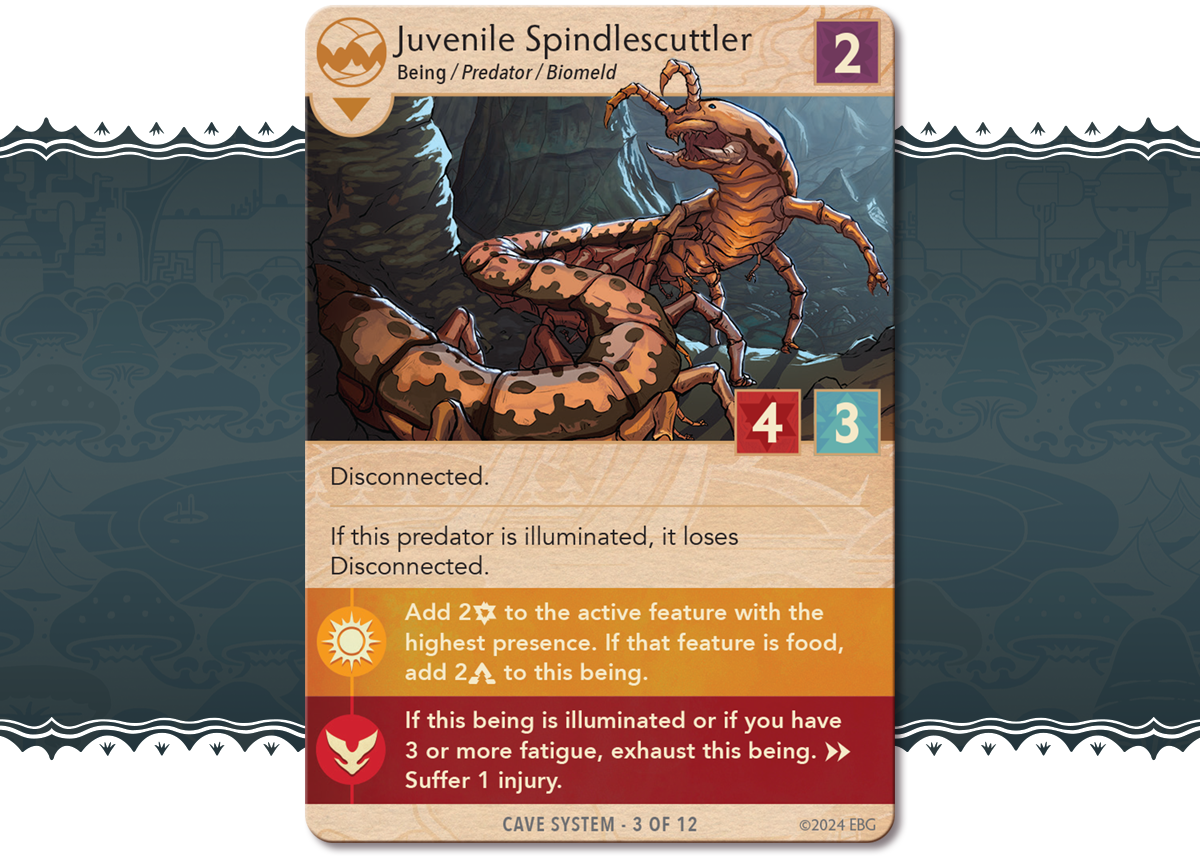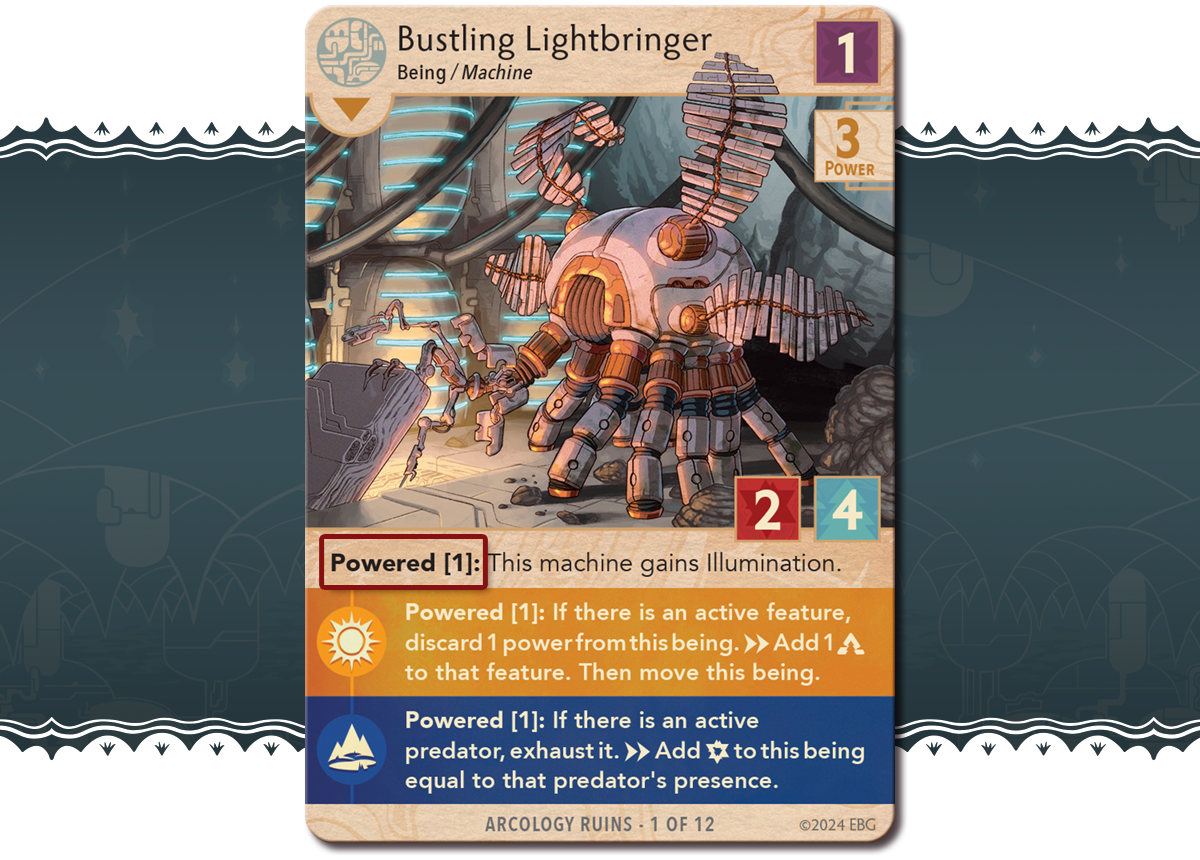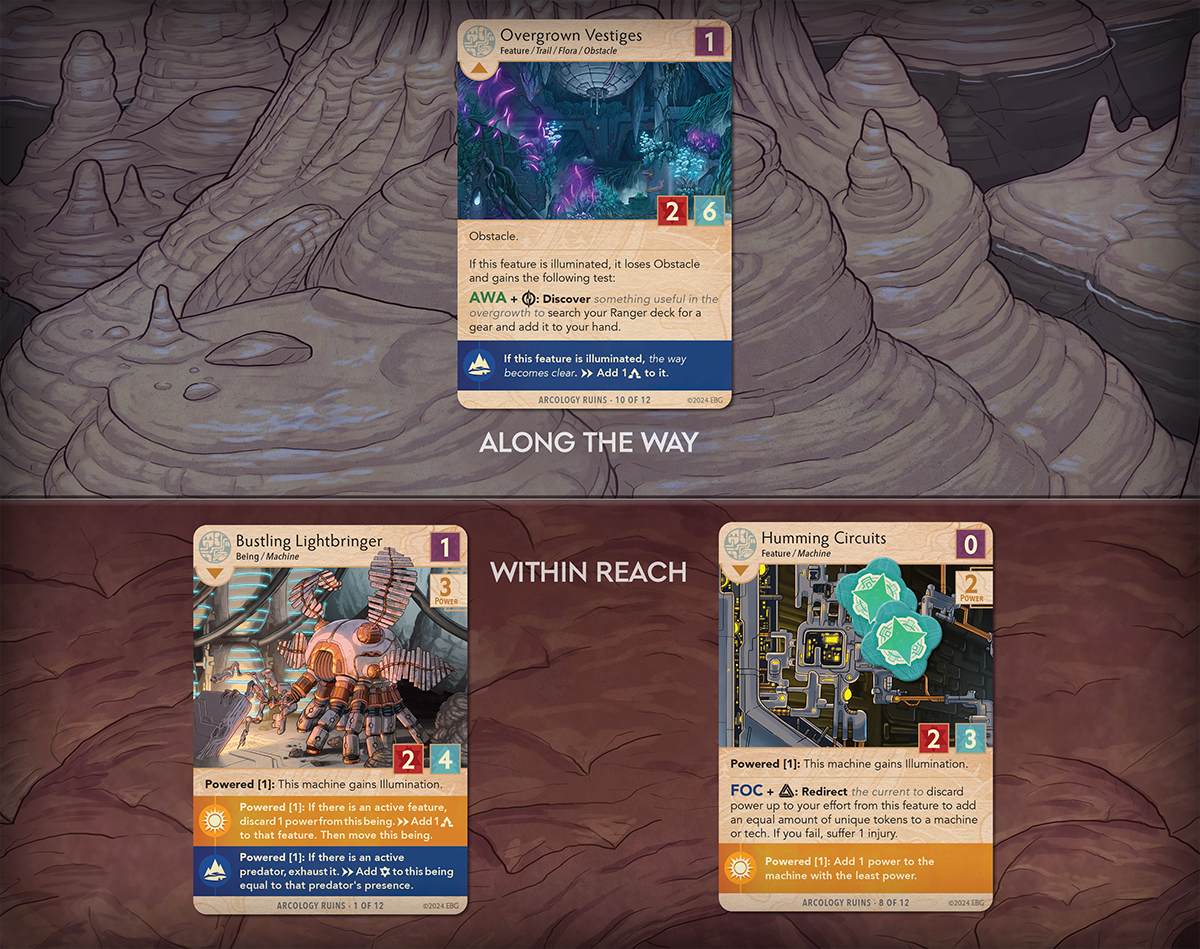Mechanical Ecology
This article originally appeared as part of the Earthborne Rangers Second Printing Gamefound campaign.
Hi Everyone!
We’re back with another update about the design of the Legacy of the Ancestors campaign expansion. In the most recent episode of our podcast we talked with designers Luke Eddy and Davi Paulino and gave a small preview of two of the new mechanics you’ll discover as you explore the arcology ruins. Today we’ll go more in-depth about those mechanics and show you a few of the cards that use them in action. Let’s dive in!
A Note on Spoilers: In these design updates, we will preview a select few cards for the upcoming expansions. Regarding story, we will not be spoiling any details that occur past the first day or two of the Legacy of the Ancestors campaign, or that aren’t readily apparent from reading the rulebook or component list. If you prefer, however, to approach the expansion completely sight-unseen, we recommend not reading these design-focused updates.
The Mechanical Ecology of LOA
To those of you new to Earthborne Rangers, the “mechanical ecology” is a term we use to refer to the dynamics created between the various beings and features you encounter in the game. Based on the locations you're visiting and the terrain type upon which you're traveling, the path deck is constructed from different cards that will interact with each other in different ways. Inspired by the interactions of a natural ecology in the real world, the interactions between path cards create emergent moments and make the world feel alive as you play. If you’re curious to read more, designer Brooks Flugaur-Leavitt discusses this in more detail inthis article from our original Kickstarter campaign.
As we designed the subterranean areas of Legacy of the Ancestors, crafting the ecology of these spaces was a priority. We wanted them to feel familiar to path cards you'll find in the core game, but we also wanted them to surprise and challenge you. Our hope is that they encourage you think about the game in new ways while not overwhelming you with new rules. To that end, there are two mechanics that you’ll see used throughout the path and location cards of Legacy of the Ancestors that add both thematic texture and gameplay challenge to their ecologies: illumination and power.
Illumination
Illumination is a new keyword that appears on cards in Legacy of the Ancestors. This keyword doesn’t do anything on its own, but other card effects will check for it. Some card effects will check to see “if [this card] is illuminated.” These effects will only resolve if there is a card with the illumination keyword in the same area as that card, or if that area is granted illumination by another rules effect. Cards with the illumination keyword light up the entire area around them.
Illumination creates modal challenges throughout the terrain sets. Light can be beneficial, but it can also court danger. As you can imagine, your Rangers often want light to help them navigate the subterranean passages below the surface of the Valley, but there may be beings underground who prefer the dark and might not respond favorably to bright lights!
Power
Power on the other hand, isn’t a new rule per se, but it instead uses an existing rule in a new way. In the depths of the arcology ruin, you’ll discover many remnants of ancient technology. While much of it has lain dormant for centuries – and remains so – some of that technology still functions. These path cards, like many in the core game, have a box on them with a unique token name. In this instance, however, these tokens share a name: “power.” These cards can then interact with one another, building, leaking, and transferring power through tests and challenge effects. Additionally, some text effects are preceded by “Powered [X].” These only resolve if that card has power tokens on it greater than or equal to the value of X.
The Arcology Comes to Life
In the following example, imagine that your Ranger is exploring the arcology ruins; a Humming Circuit and Bustling Lightbringer within reach. Some Overgrown Vestiges – an obstacle – sit along the way, preventing you from traveling. If you could illuminate the Vestiges, however, they would lose “Obstacle” (and gain a beneficial test). Unfortunately, the Bustling Lightbringer within reach is all out of power tokens, and it only gains the illumination keyword if it has at least one power.
In an attempt to power up the Lightbringer, you decide to perform the Redirect test on the Humming Circuit, committing 1 FOC energy. You draw a challenge card with +1 FOC and a Sun challenge effect. After succeeding the test, you discard all of the power on Humming Circuits to add 2 power to the Lightbringer, giving it the illumination keyword.
Then, fortune shines upon you. The Sun effect on the Lightbringer allows you to both move it and add a progress token to the Overgrown Vestiges! You choose to move it along the way. By virtue of it now being in the same area it Illuminates the Vestiges, removing the Obstacle keyword, and clearing the way for you to travel.
Finally, you check the last Sun effect on the Humming Circuits. It could have added more power for a future turn, but you discarded them all. You make a note that next time you might want to reserve one so that they continue charging.
The above example is just one of many ways the new mechanics can interact with each other on the table, and hopefully you can start to imagine some of the unique situations in store for your Ranger beneath the surface of the Valley. We’re excited to hear all your stories when you dive into Legacy of the Ancestors later this year!
Thank you all so much for continuing to make this campaign a success. We are so grateful for all of you. Until next time!






